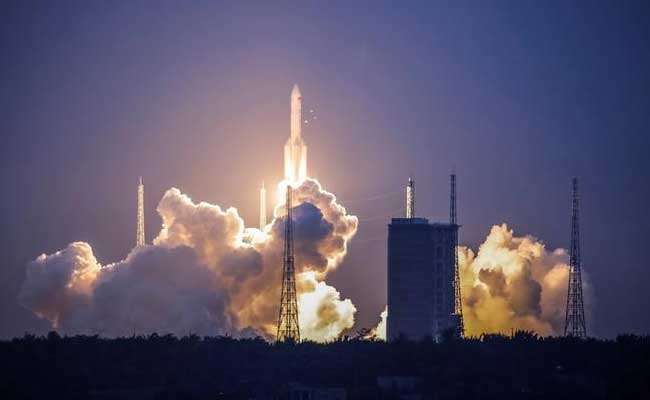July 2, 2017
Beijing: China''s ambitious space programme suffered a rare setback today as its new heavy-lift carrier rocket, the Long March-5 Y2 failed to put the country''s largest satellite into orbit.

July 2, 2017
Beijing: China''s ambitious space programme suffered a rare setback today as its new heavy-lift carrier rocket, the Long March-5 Y2 failed to put the country''s largest satellite into orbit.

An anomaly occurred during the flight of the rocket, which blasted off at 7:23 PM (local time) from Wenchang Space Launch Centre in southern province of Hainan, state-run Xinhua news agency reported.
Further investigation will be carried out, it said.
The blast which was telecast live initially appeared successful as the rocket blasted off seemingly without problem. But Xinhua later reported that the rocket launch has failed.
The Long March-5 made its maiden flight in November 2016 from Wenchang, sending its payload into pre-set orbit.
The rocket, carried the Shijian-18 satellite.
The launch is the last test for the Long March-5 series before its mission to send the Chang''e-5 lunar probe into space in the latter half of this year, which will return with samples, the report said.
With a weight of 7.5 tonnes, Shijian-18 is China''s latest technology experiment satellite and the heaviest satellite China has ever launched into space, it said.
It was aimed at testing China''s new Dongfanghong-5 (DFH- 5) satellite platform and carry out in-orbit experiments including Q/V band satellite communication, satellite-ground laser communication technologies and an advanced Hull electric propulsion system, it said.
China is carrying out massive space programme in recent years with missions to moon and manned missions to build a space station which is currently under construction.
According to experts, the massive heavy rockets also have fined tuned China''s missile power.
The Long March-5 uses environmentally friendly fuel, including kerosene, liquid hydrogen, and liquid oxygen, rather than highly toxic propellants, it said.
In April this year China has launched its first cargo spacecraft, Tianzhou-1, into space using the country s heaviest Long March-7 Y2 carrier rocket to dock with the orbiting experimental space station which was expected to be operationalised by 2022. .
Tianzhou-1 was larger and heavier than Tiangong-2, which is 10.4 metres in length and has a maximum diametre of 3.35 meters, weighing 8.6 tonnes.
Courtesy: PTI
















































































































